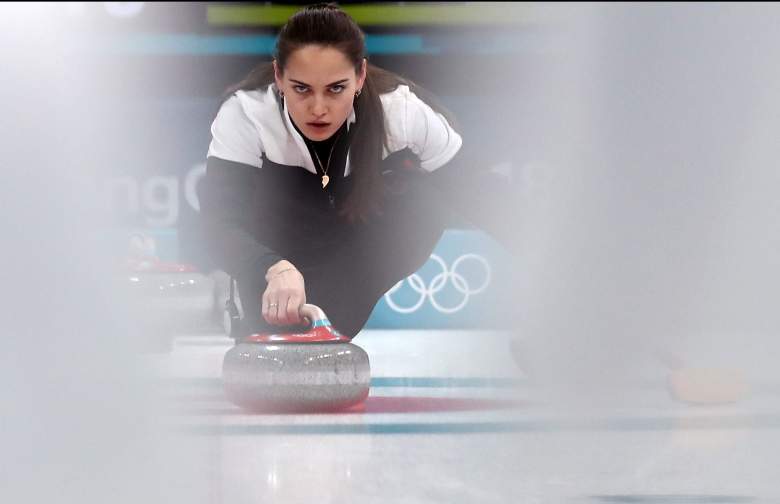
Getty Images Olympic curling
If you’ve ever watched Olympic curling, ostensibly, it might not seem like the most exciting sport; perhaps some sort of a hybrid between shuffleboard and air hockey. However, after taking a closer look at the sport — the precision, the exactness, the absolute concentration required by the competitors; there is much more to curling than meets the eye. With the mixed doubles gold medal competition on today’s schedule, take a closer look at the subtle nuances of the game. Curling is an Olympic sport with good reason, and it’s all coming down to a match between Canada and Switzerland.
Some may say that curling is boring. With all due respect, those who consider curling boring may not fully understand the sport. So, here is a quick rundown of what you need to know.
Let’s take a brief look at the rules of curling, how is it judged, what the objective is, and what you need to know before tuning in.
1. What Olympic Curling Is
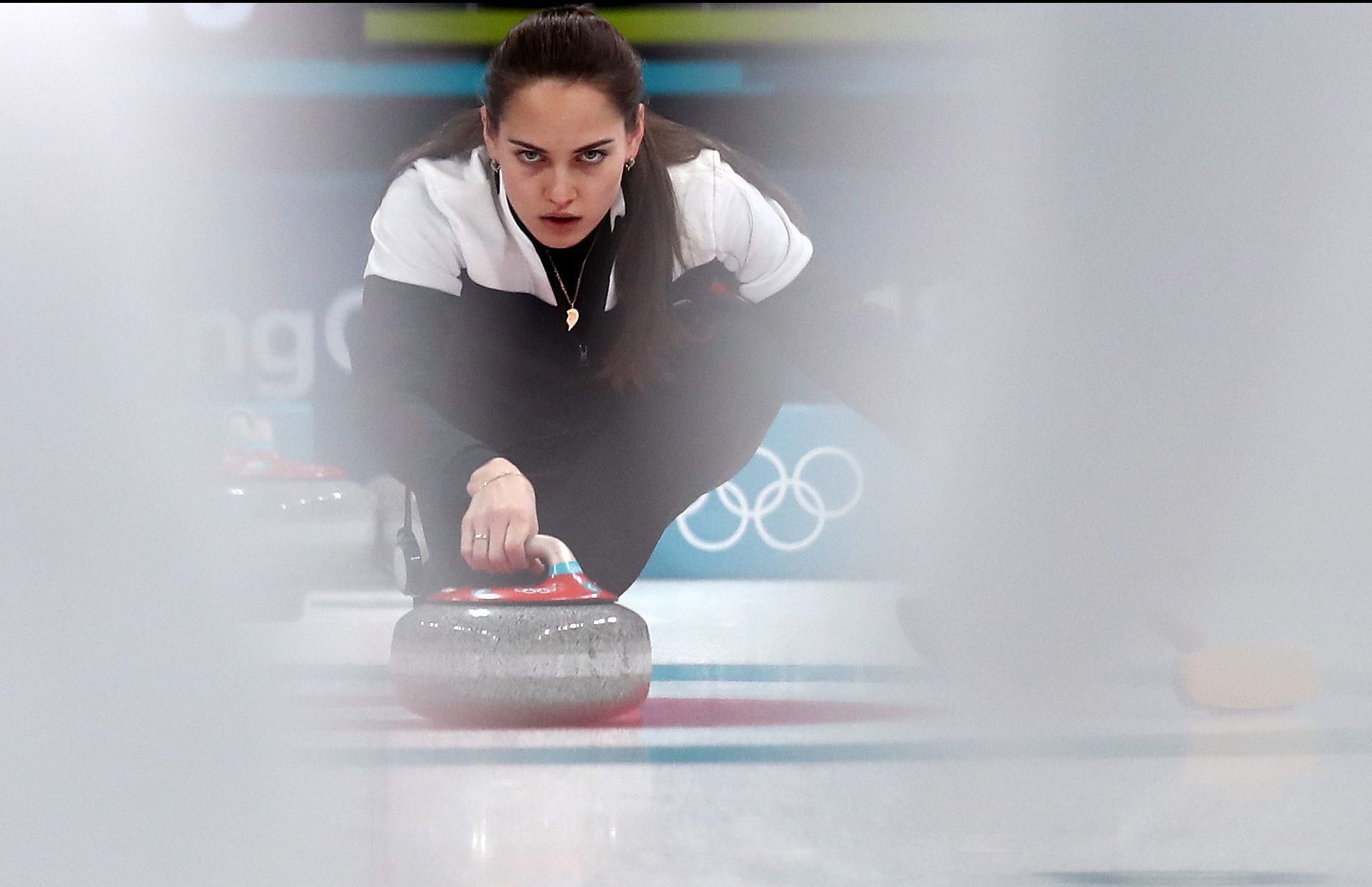
Getty ImagesOlympic curling
“CURLING IS A TEAM SPORT PLAYED BY TWO TEAMS OF FOUR PLAYERS ON A RECTANGULAR SHEET OF ICE. ITS NICKNAME, THE ROARING GAME, ORIGINATES FROM THE RUMBLING SOUND THE 44-POUND (19.96KG) GRANITE STONES MAKE WHEN THEY TRAVEL ACROSS THE ICE,” as defined by Olympic.org.
So, the “pucks” pushed across the ice are, in fact, 44 lb. granite stones, which gives you an idea of the power, strength and athleticism required by Olympic curlers. Of course, the Olympians make the stones, sometimes referred to as rocks, appear virtually weightless, yet in reality, curling is known as “the roaring game” with good reason; the rumble of the heavy granite stones sliding across the icy surface with great force.
While one competitor aims the stones, his or her teammate rapidly smooths the surface directly in front of the stone for greater speed and agility. Expert, precision aim, speed and immense power is needed by both teammates in other to succeed.
Curling competitions are held on a special kind of artificially created ice containing small bumps to increase friction. This helps to control the path of the stone. Players wear specially designed shoes with grips on the bottom to allow them to move on the ice with greater speed and agility. Curling has been an Olympic sport since 1924, when it made it debut at the 1924 Chamonix Winter Games.
2. The Objective of The Game
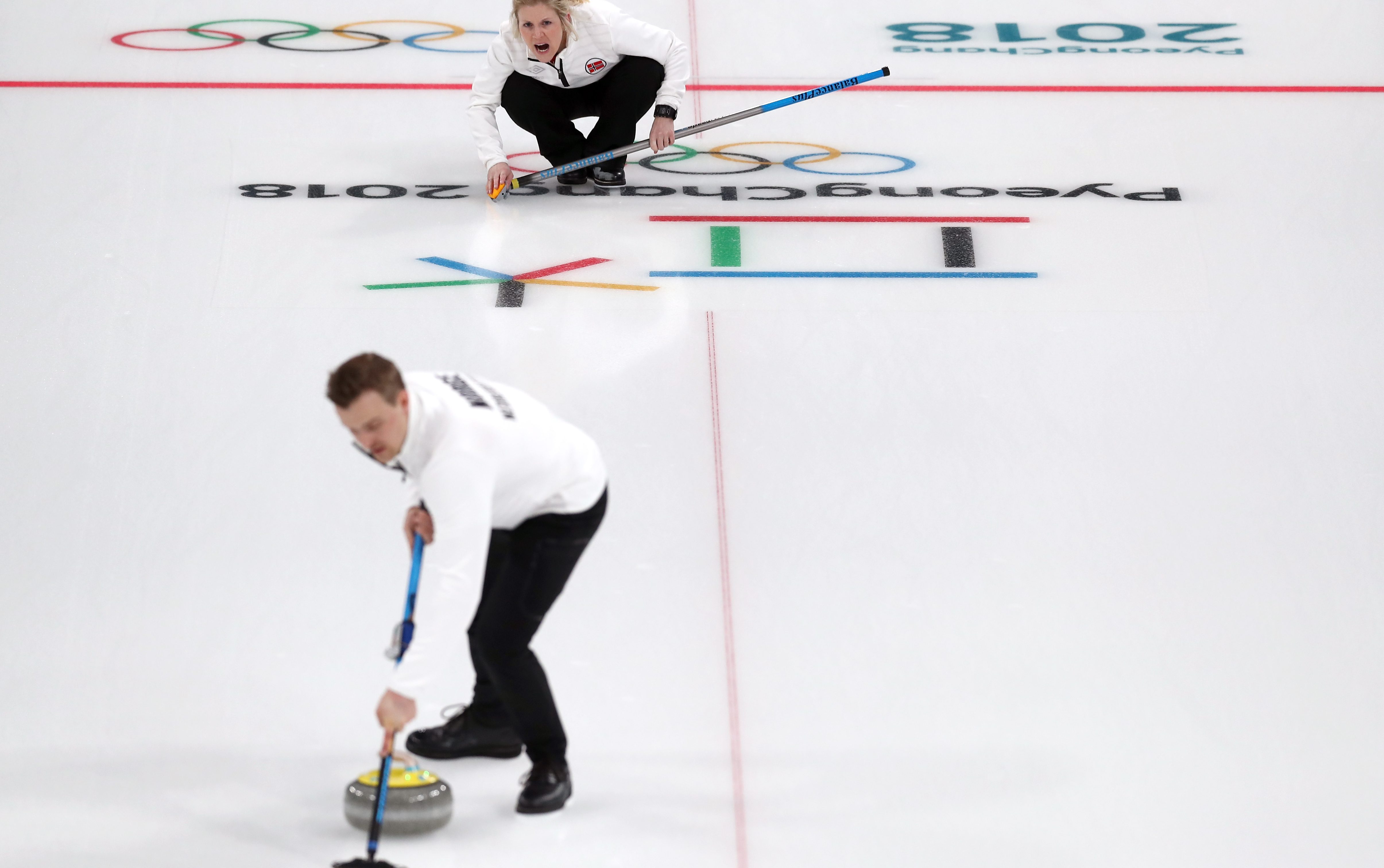
Getty ImagesOlympic Curling
Curling may appear simple, but it is frequently referred to as “chess on ice” for a reason. Players must anticipate the next move of their opponent, and beyond that. Curling is not only an exercise of the body, but an exercise of the mind.
“Curling (also known as Kurling in Europe, and sometimes referred to curling as ‘chess on ice’), is a technical sport played by two teams or four players on a rectangular sheet ice with large heavy, polished granite stones. The teams take turns sliding the stones down the ice towards the target. Two sweepers with brooms or brushes also accompany each stone to help direct them. The aim is to get the stone to stop in ‘the house’, a target at the end of the ice track. Basically, the team with the most points in the match wins, with a point awarded for every stone closer than the other team’s best effort,” explains topendsports.com.
Topendsports.com summarizes a brief history of curling as follows:
“For a long time the curling event at the 1924 Games was considered a demonstration event. It was not until 2006 that the IOC decided that curling was officially part of the program and retroactively awarded medals to the 1924 curling teams. Curling was also a demonstration sport at the Winter Games of 1932, 1988 and 1992. Curling was next officially on the Olympic program in 1998, and has been since. Therefore, curling has been an official part of the Olympics for the following years: 1924, 1998, 2002, 2006, 2010 and 2014. There are three medal events: a men’s and women’s event, and mixed doubles. A mixed doubles event was approved for inclusion in the 2018 Winter Olympics following an IOC Executive Board meeting in June 2015.”
3. How Exactly The Game is Scored & Judged
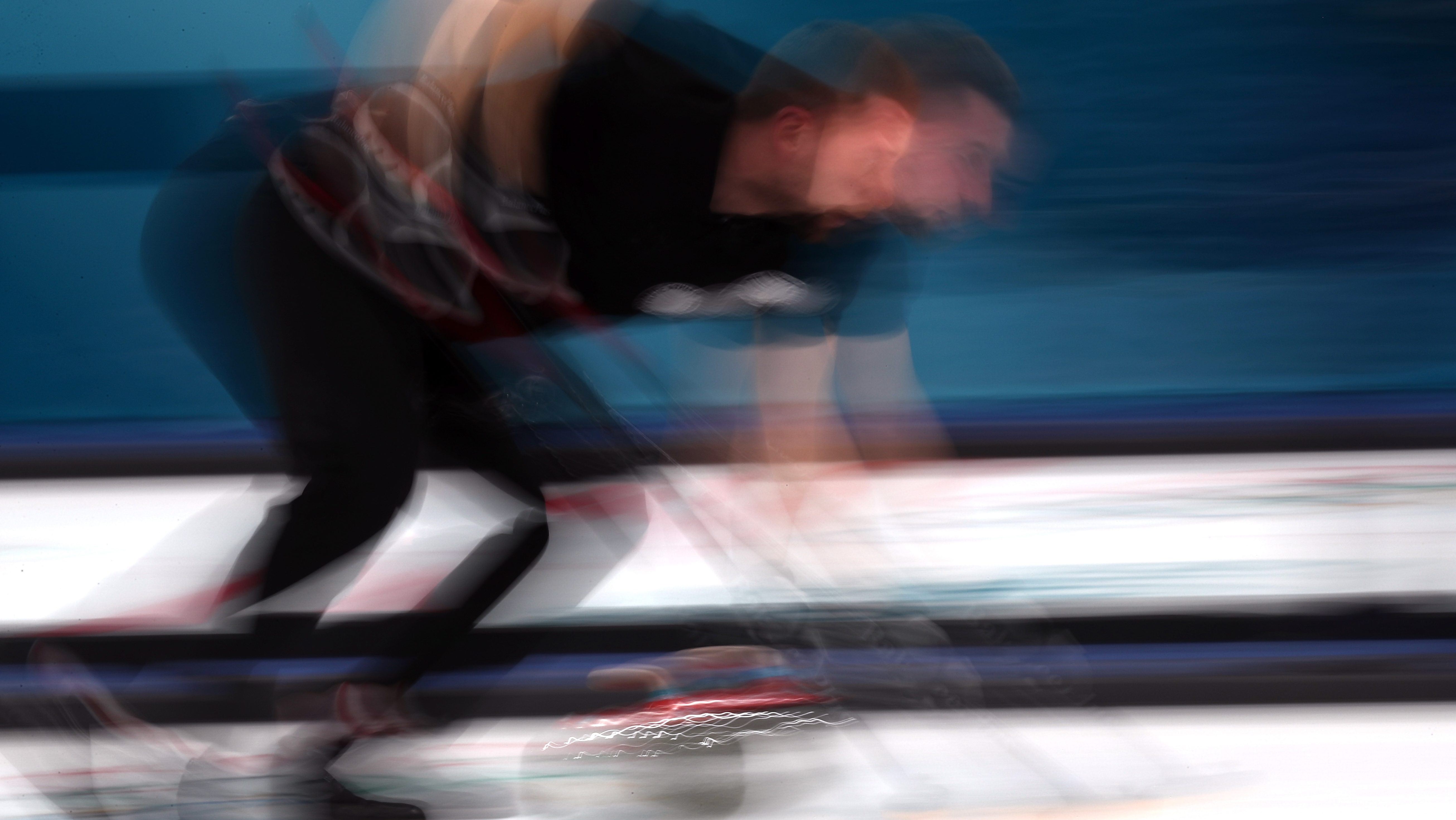
Getty ImagesOlympic curling
A quick rundown of the rules of curling is as follows, courtesy of sbnation.com:
“Olympic curling games are a little longer than regular matches, lasting 10 ends (like innings or rounds) in about two-and-a-half-hour time slots. An end consists of each team member (four per team, except in mixed doubles) shooting two stones, alternating with the opponent’s player. When all 16 stones have been delivered, scoring for that end is determined.
Only one team can score per end. A stone is considered in the scoring area if it is in, or even touching, the target (known as the house), and one point is scored for each stone closer to the middle of the target than any of the opponent’s. Whichever team gets the point, starts the next round (end).
The two basic shots in curling are draws and take-outs:
A draw is a shot that is thrown only hard enough so that it gradually comes to rest in, or near, the house.
A take-out (hit) is a shot that is thrown hard enough so that it pushes another stone from play after striking it.”
What does that mean, exactly? Curling requires patience, concentration, and strength of the body and mind. Once you, as the viewer, have a good handle on how the game works, you will undoubtedly find it much more enjoyable to watch.
4. Important Things About Curling to Know
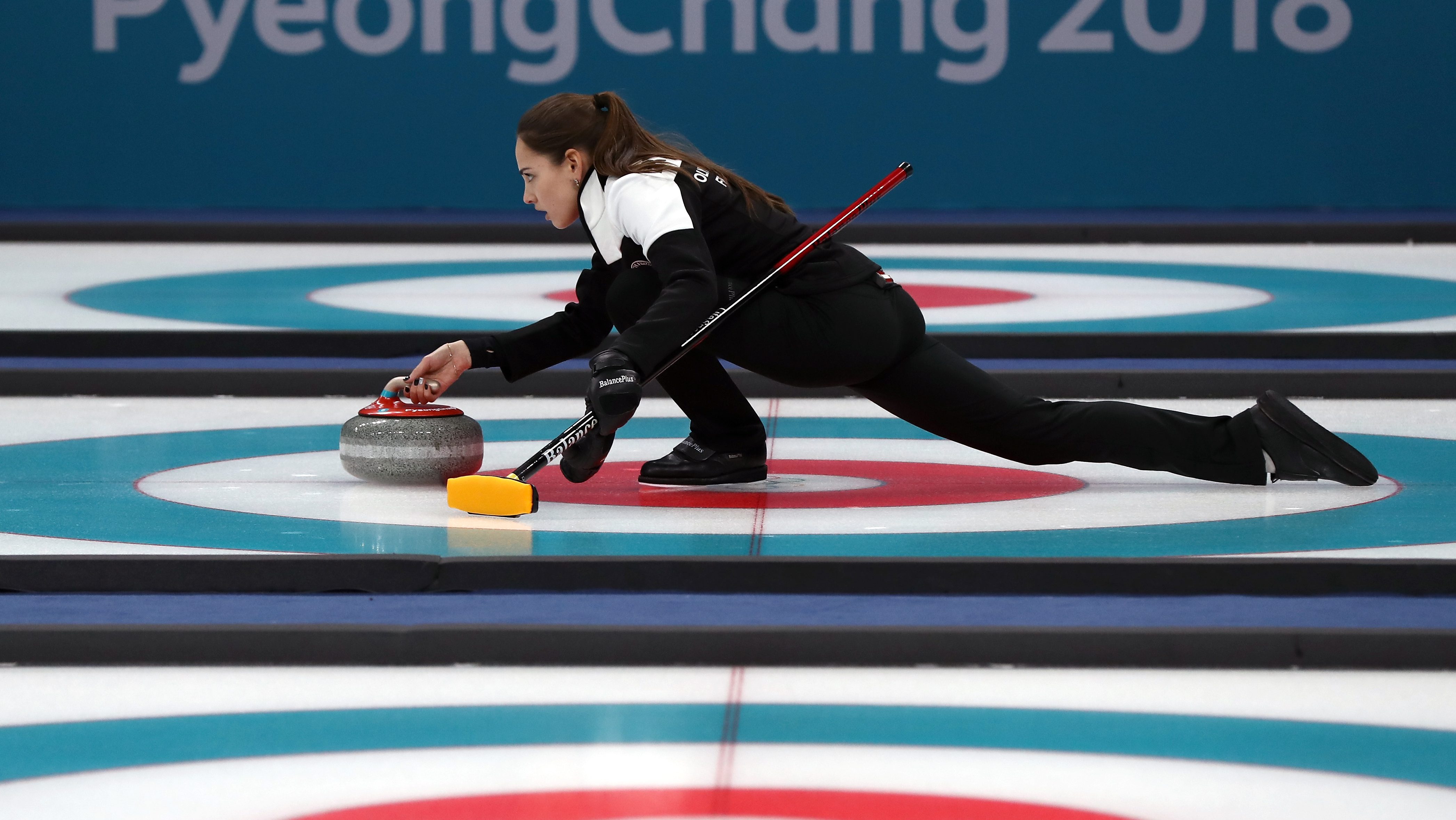
Getty ImagesOlympic curling
Are you a new curling enthusiast? No problem. Here are a few key pieces of information should you find yourself watching the Olympics with a group of curling aficionados.
– Each team has a captain, also known as a “skip.”
– The acronym SHEETZ can help you understand the overall strategy of the game, courtesy of USCA Hall of Fame Member Jon Mielke, courtesy of sbnation.com:
“SCORE: What is the score? If you are way ahead or behind, you make need to adjust your strategy to more aggressive or defensive.
HAMMER: Who has the hammer? You may be able to take more chances of you have the hammer (last rock in an end).
END: What end are you playing? Do you have several ends to play or are you near the end of the game? Where you are in the game will impact your approach to the end.
ENVIRONMENT: How is the ice? Is it keen or heavy? Is it changing during the game? Are there falls or runs? How are the stones? There are a number of environmental factors that may influence the shot you call.
TEAM: What is your team good at – hits or draws? What is your team’s mentality – defensive or aggressive? Be careful about calling shots that your team is not capable of making. Play to your team’s strengths and the opposing team’s weaknesses.
ZONE: Use the Free Guard Zone (FGZ) to your advantage. Since a stone put into the FGZ, the area in front of the house, cannot be removed from play until the second is shooting, offense is often set up using the lead stones.”
5. Who is Competing For The Gold Medal
Which Olympians are playing for Olympic gold tomorrow? The roster is as follows:
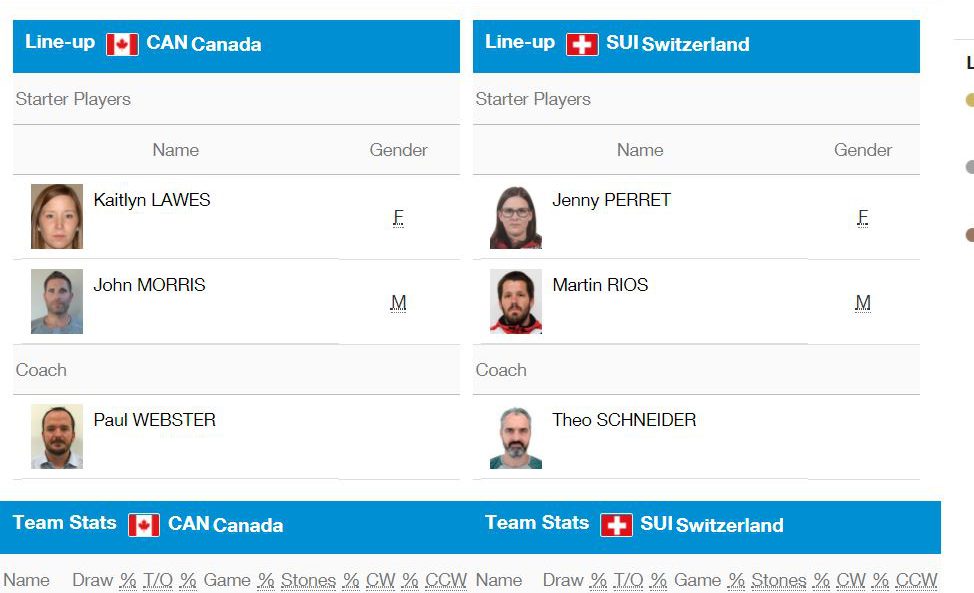
Screenshot – https://www.olympic.org/Olympic curling gold medalist competitors
Who is more likely to take home the gold tomorrow? It’s anyone’s guess, but one interesting piece of trivia is that Canada created history in Sochi 2014 when it became the first nation to win both men’s and women’s Curling events in the same Olympics. Will Canada reign supreme again tomorrow? That remains to be seen; but be sure to tune in to find out, now that you are practically a curling expert.
